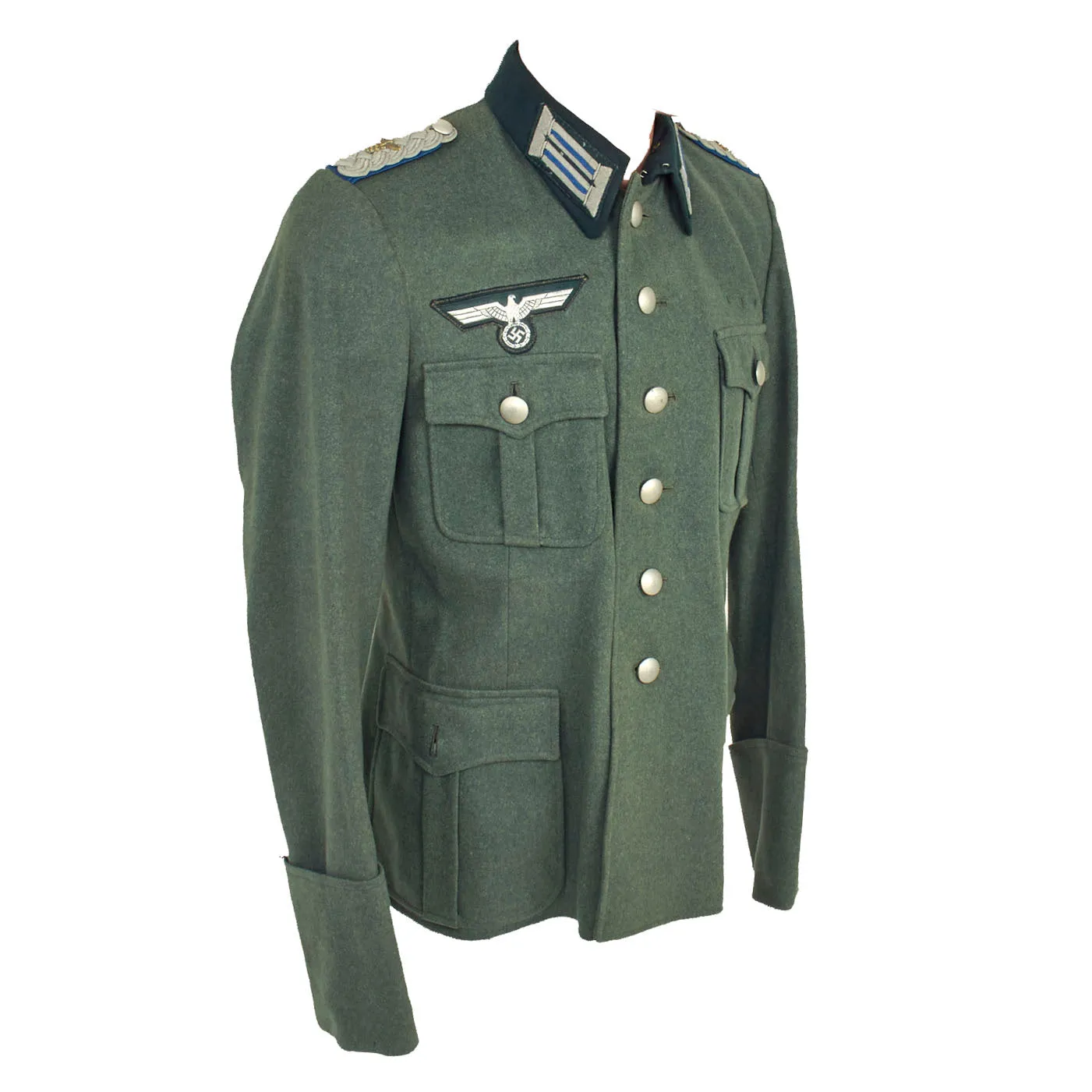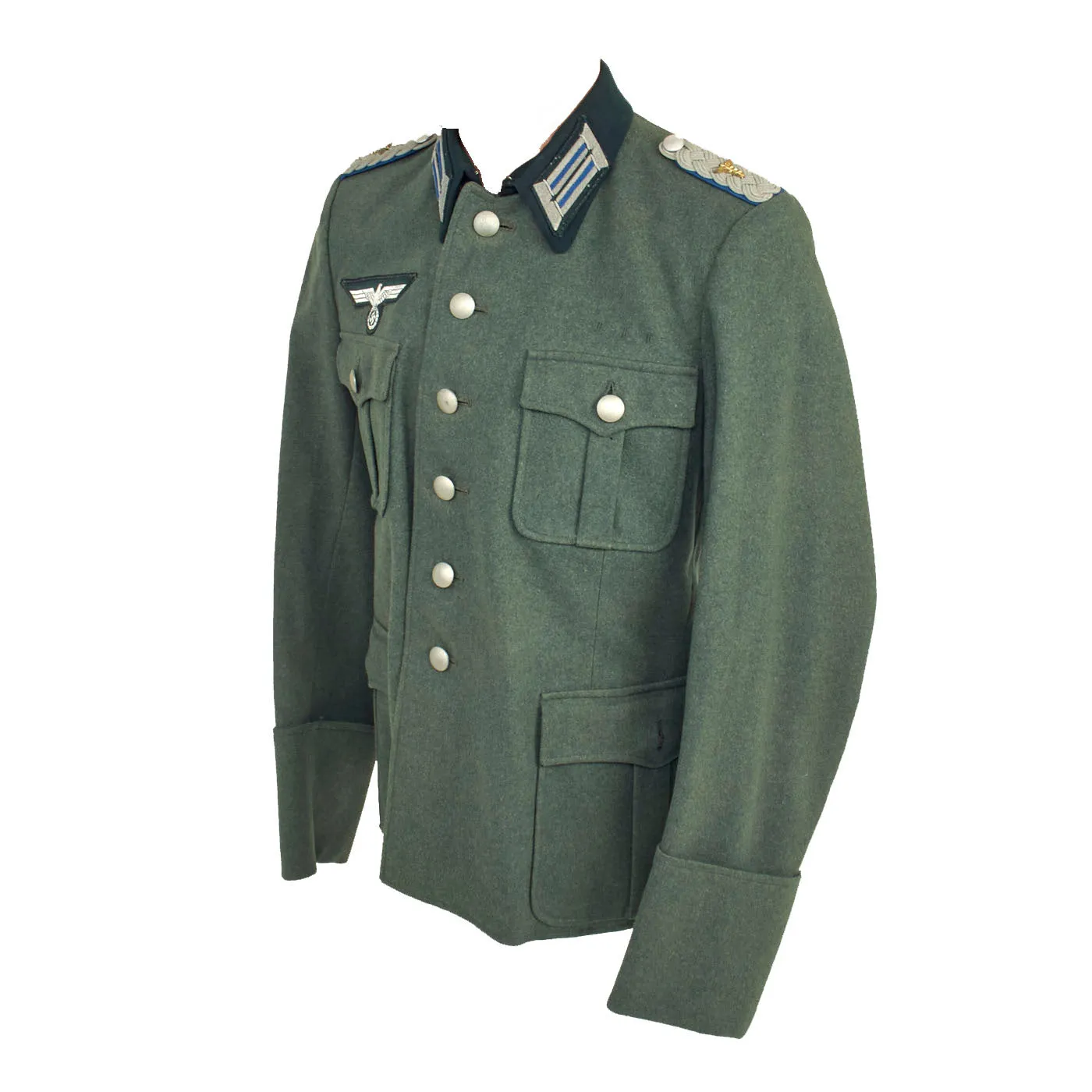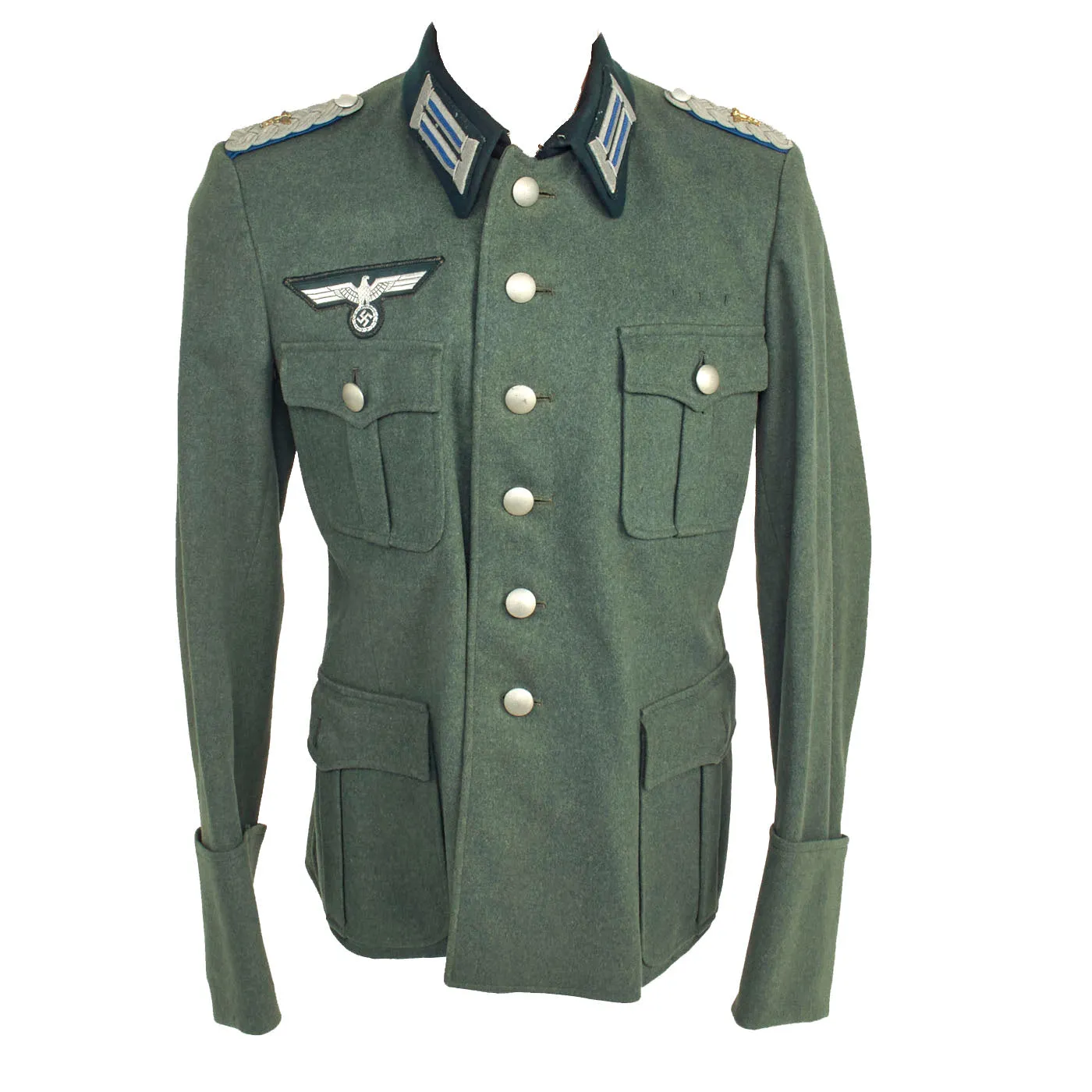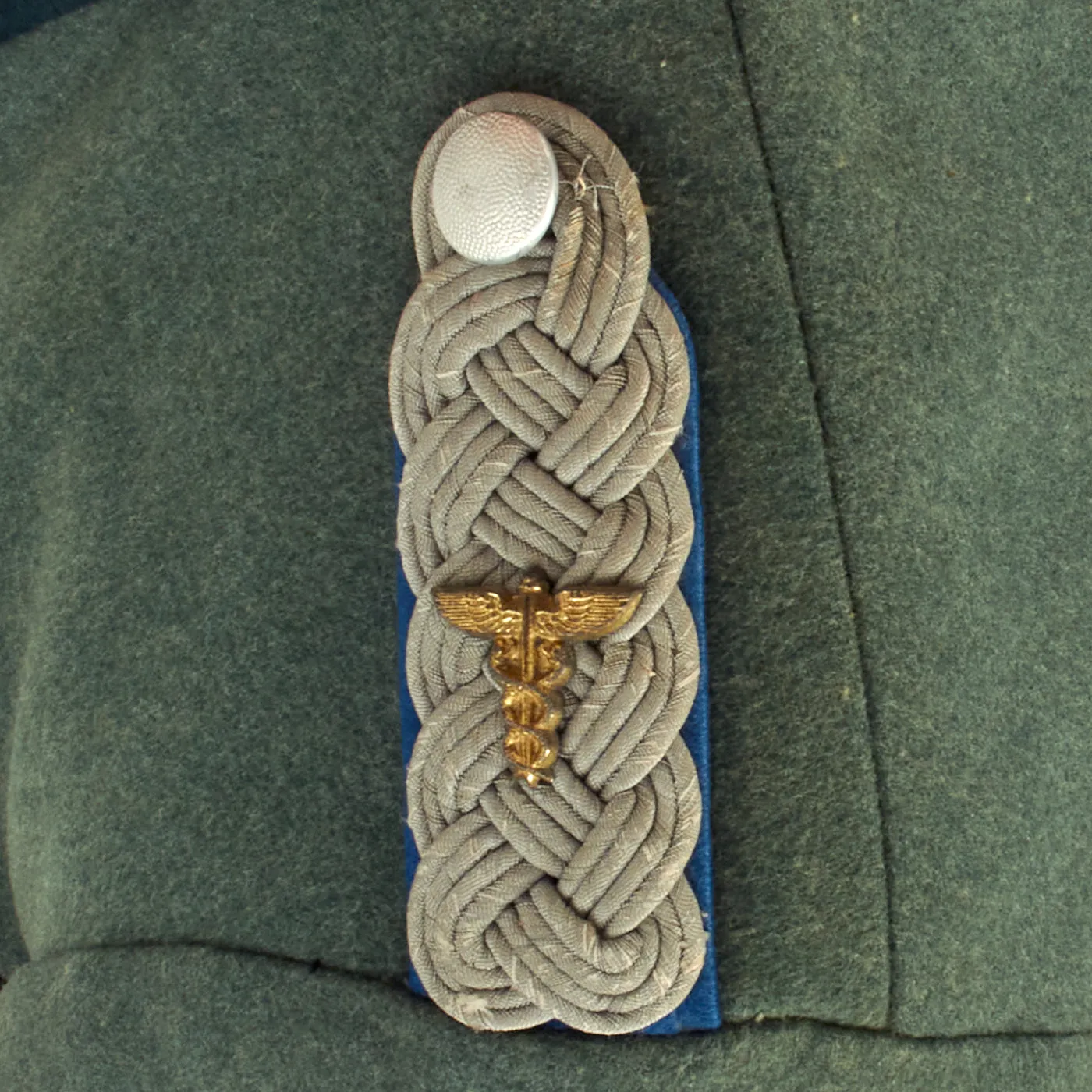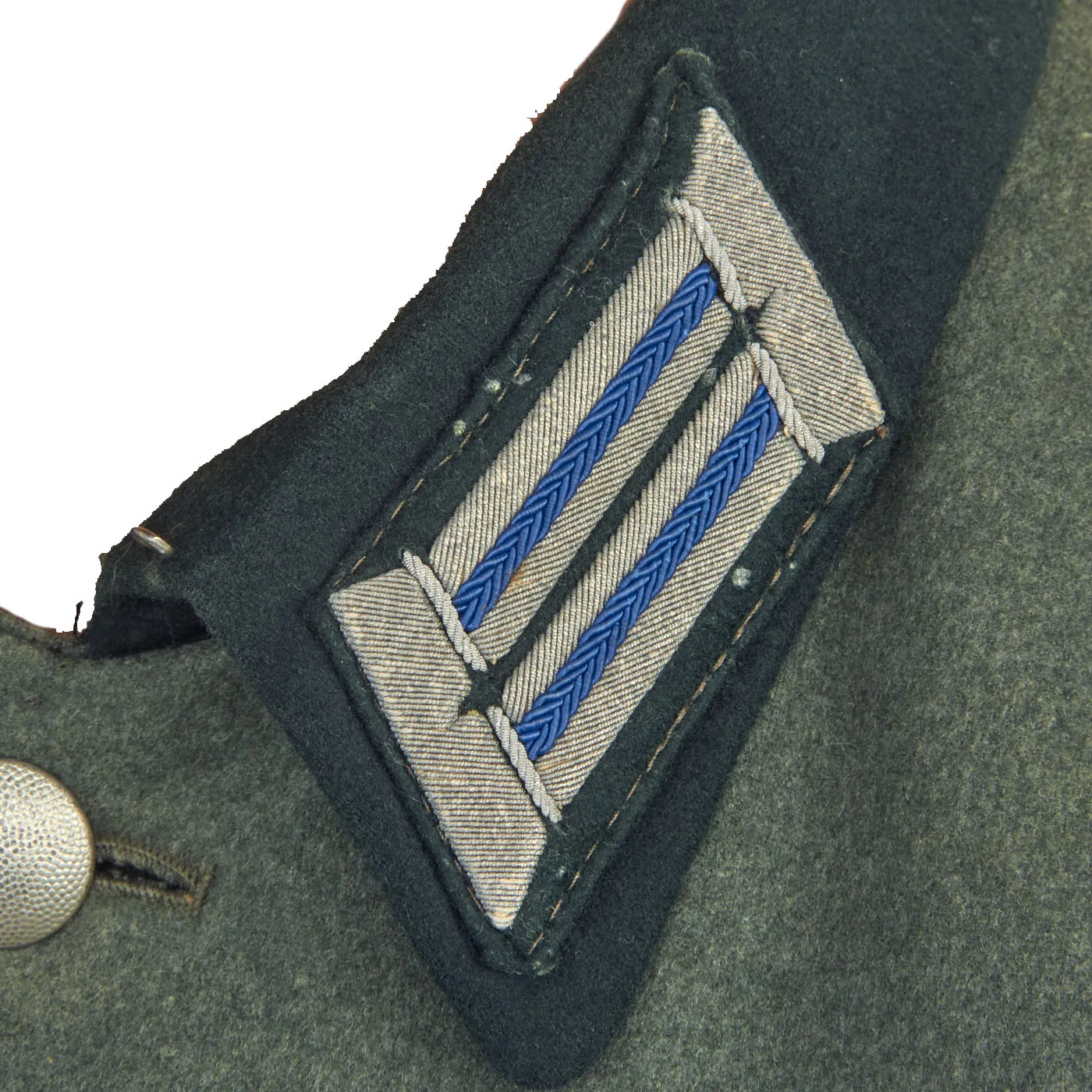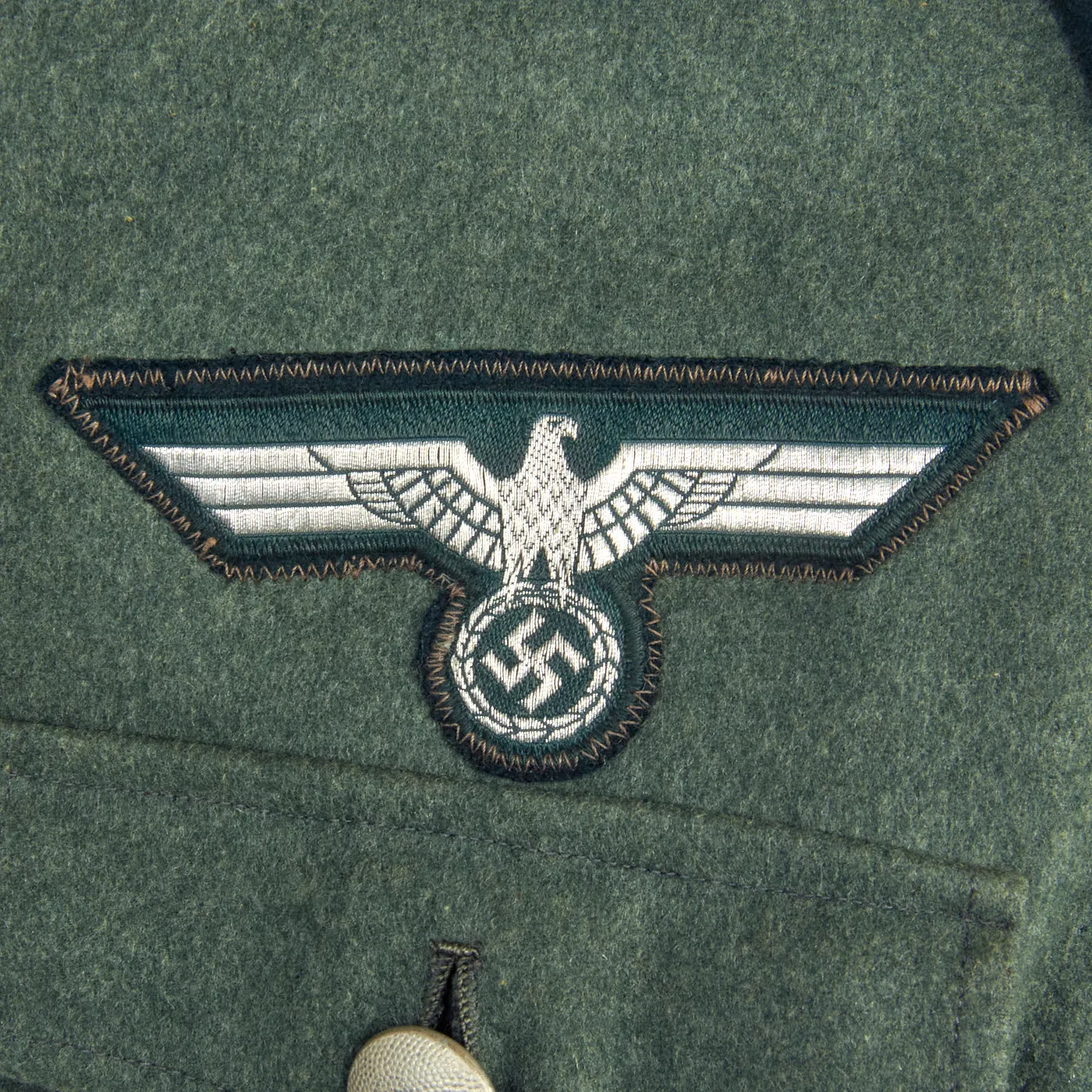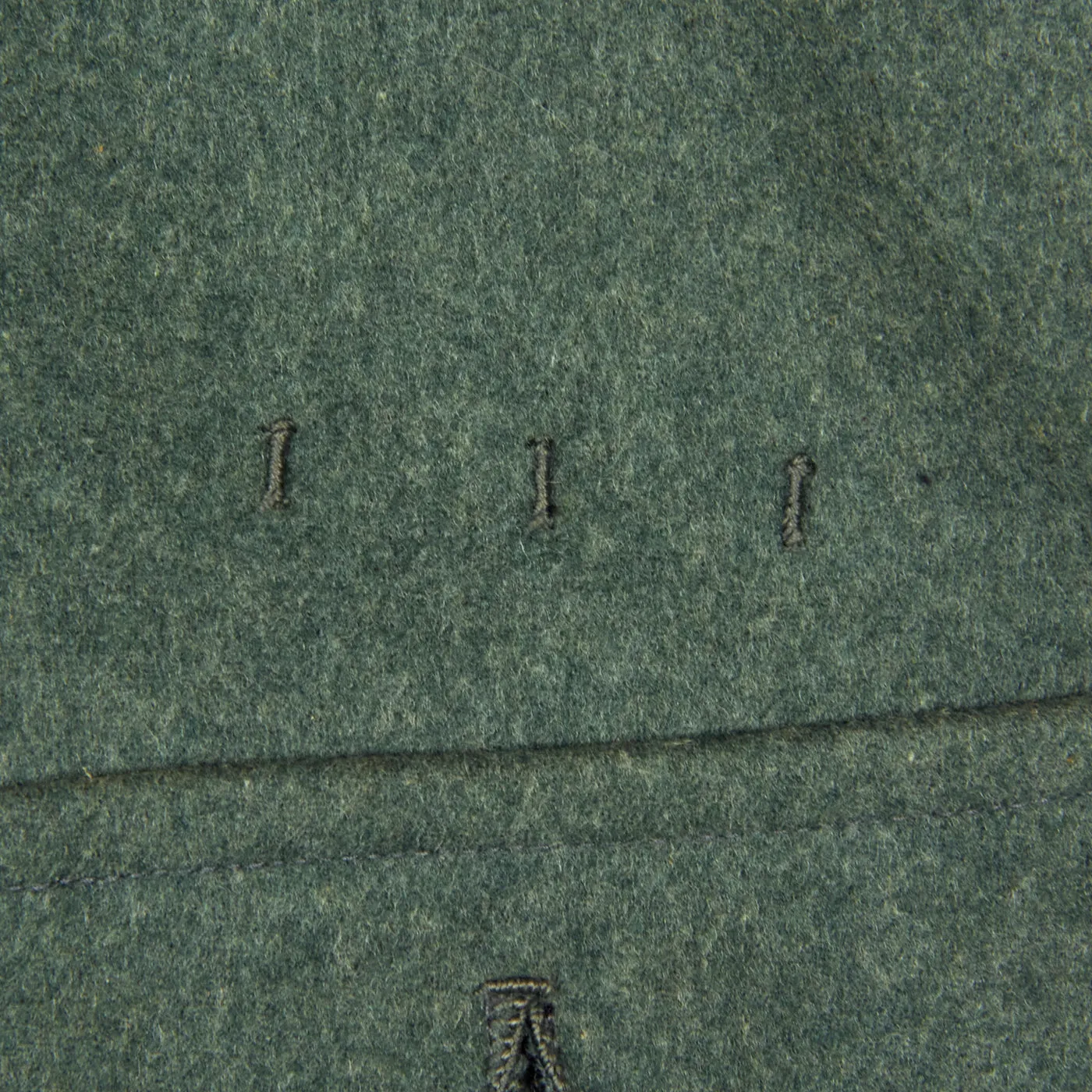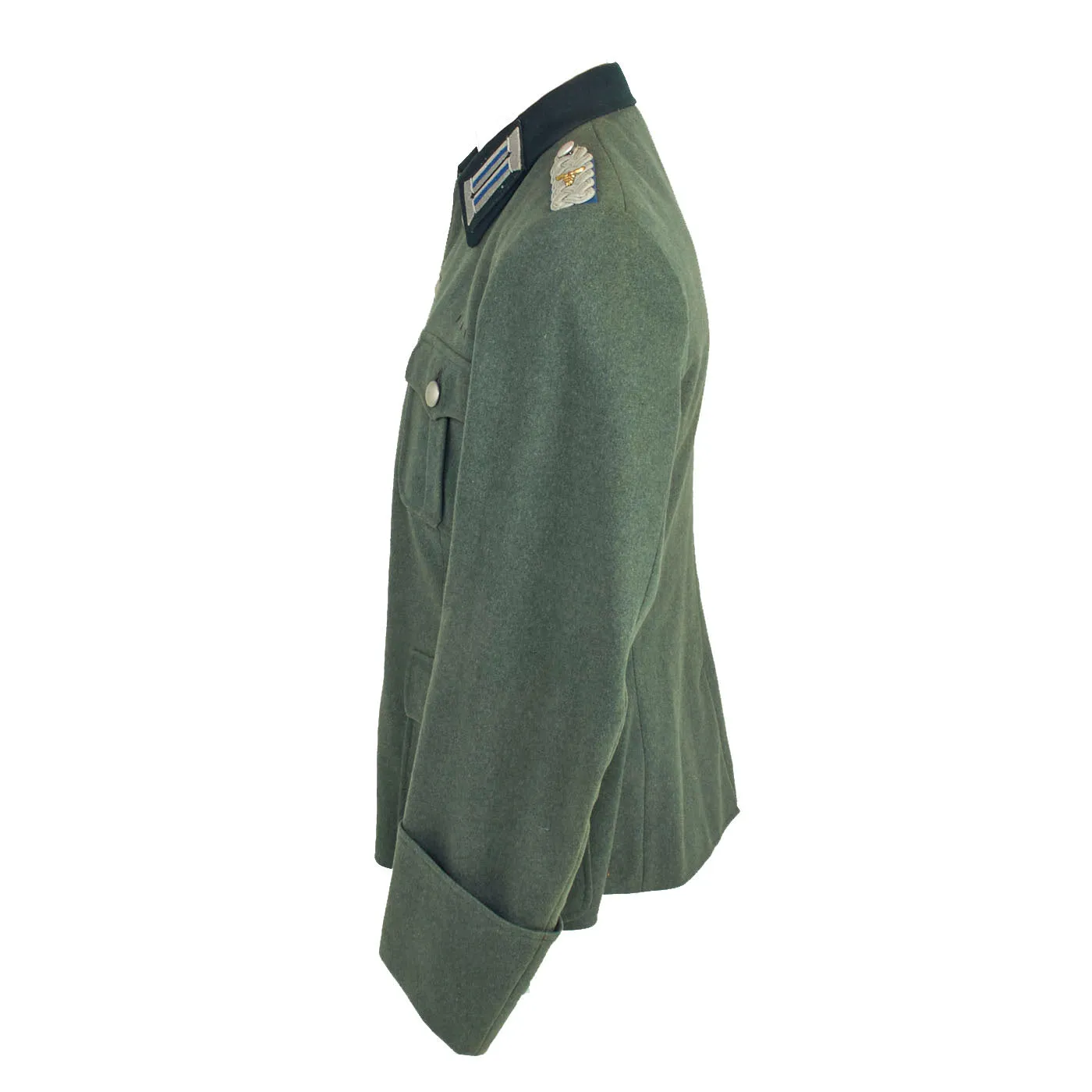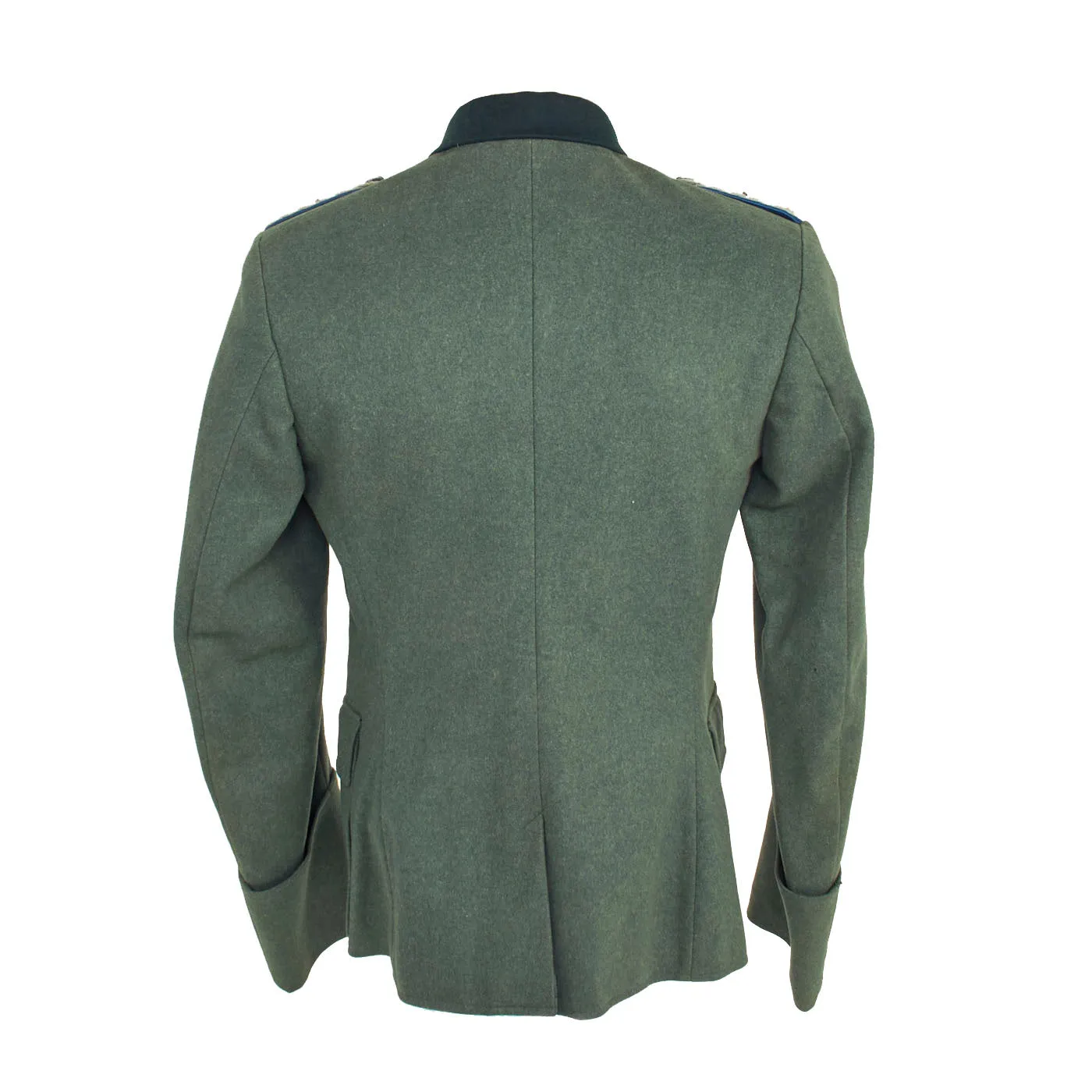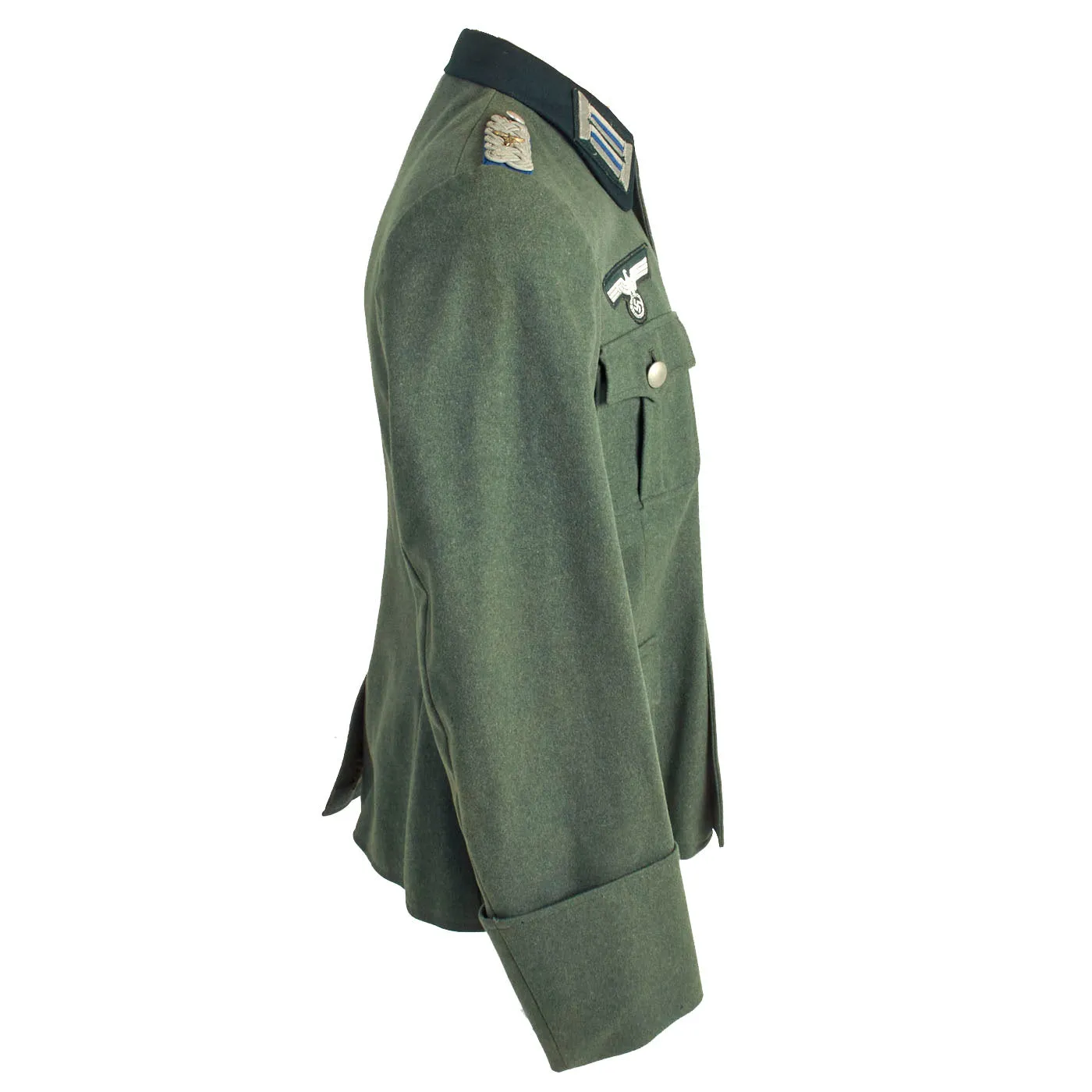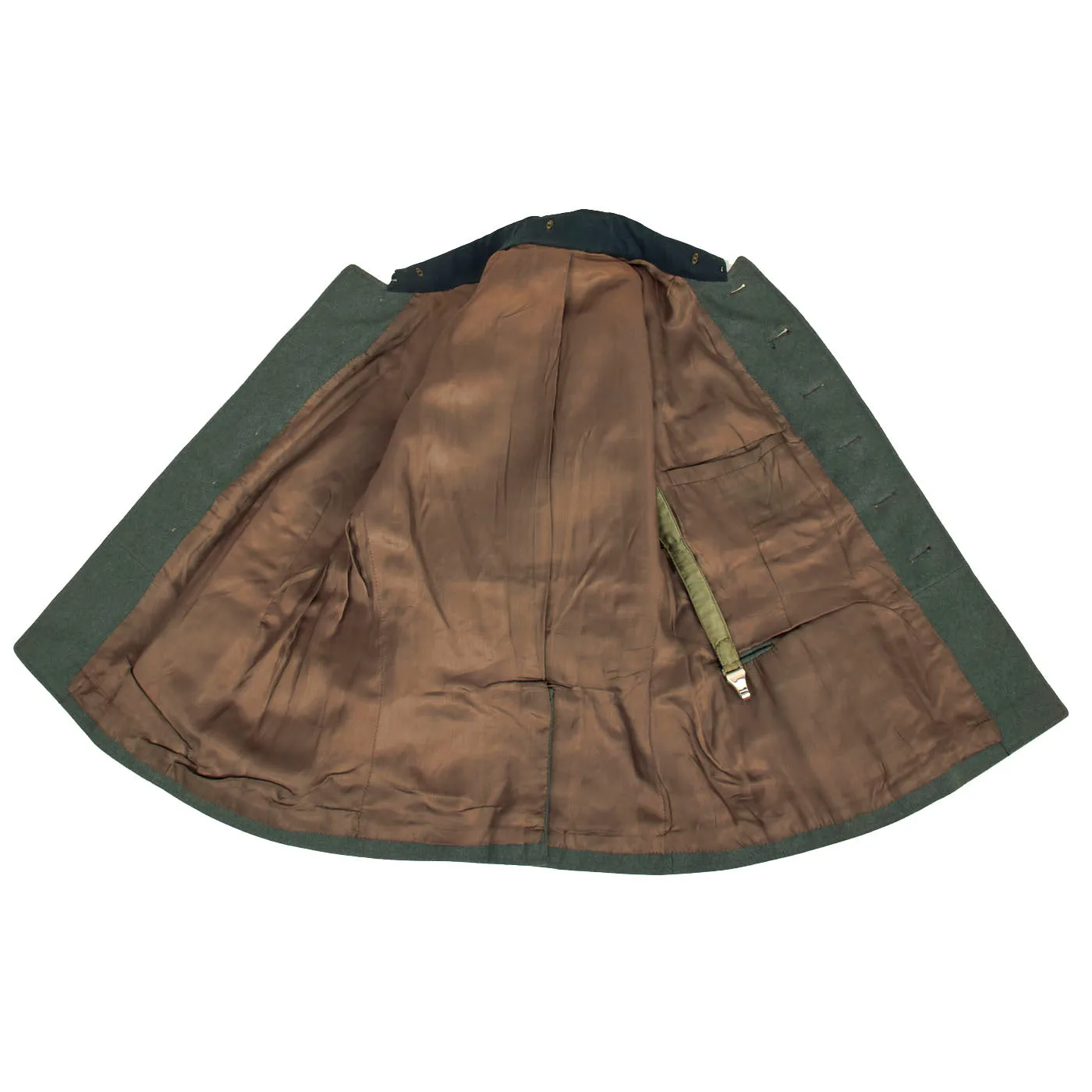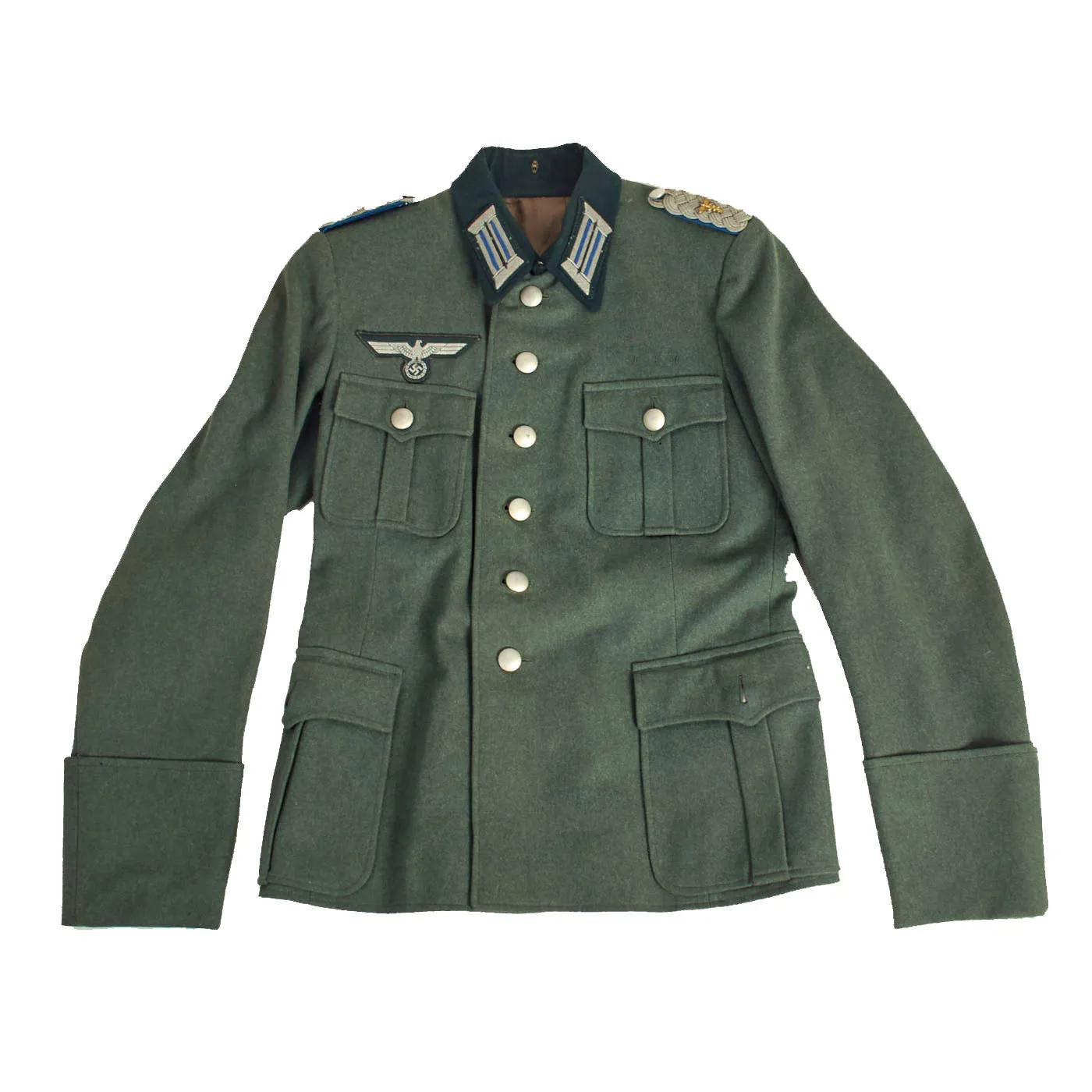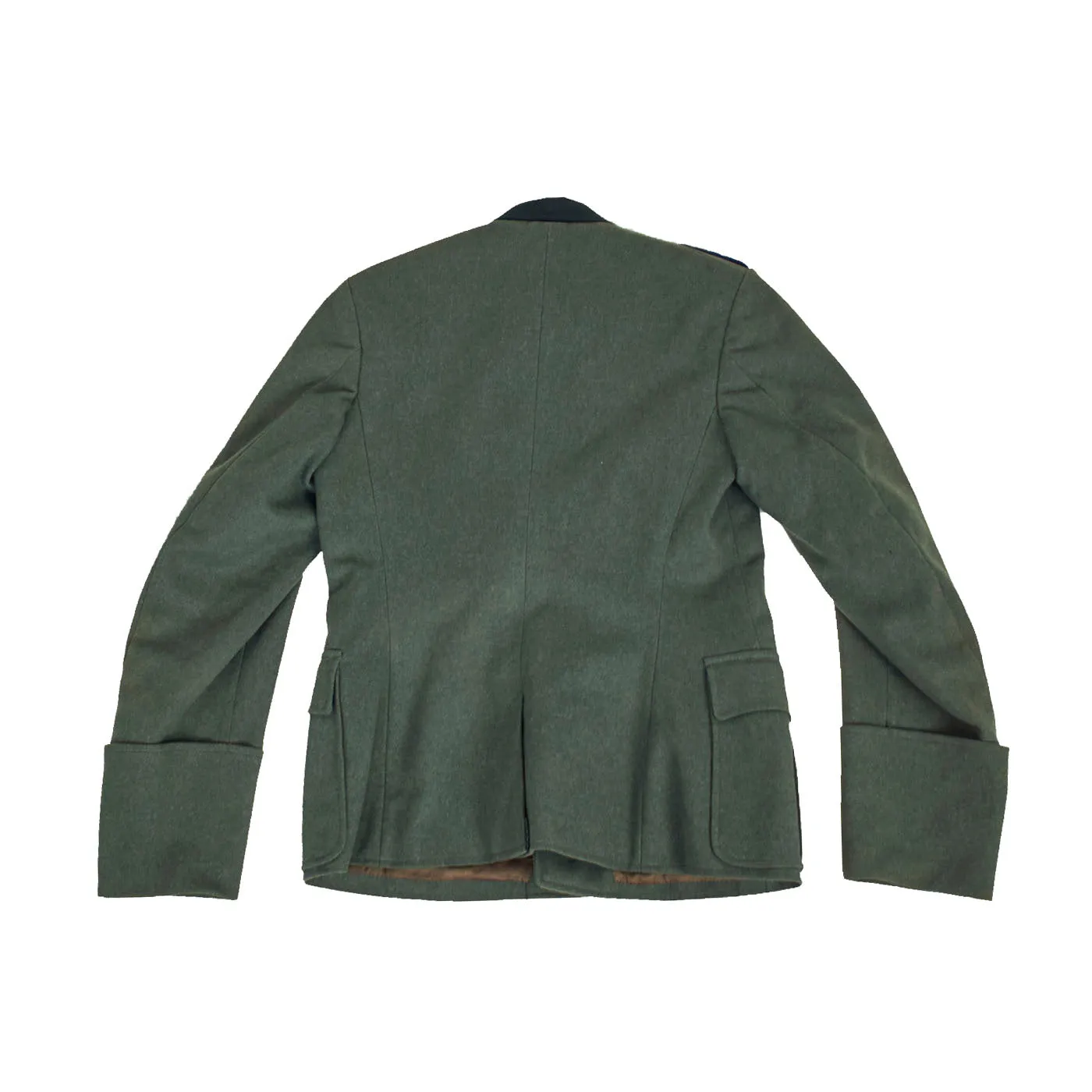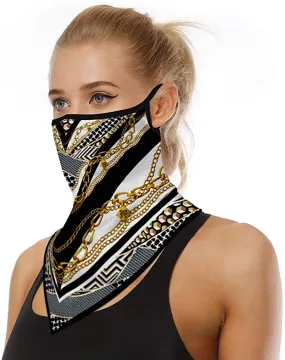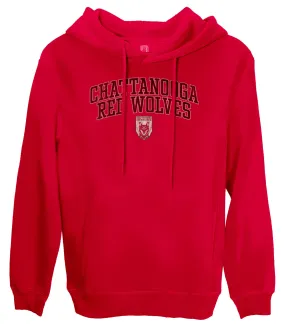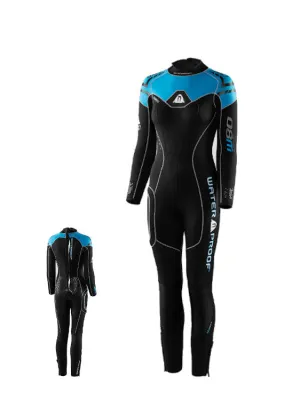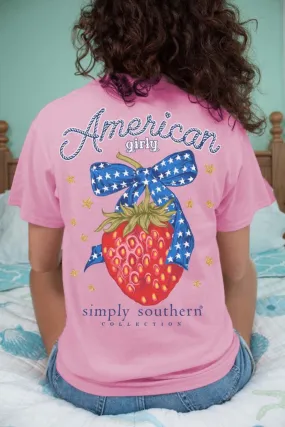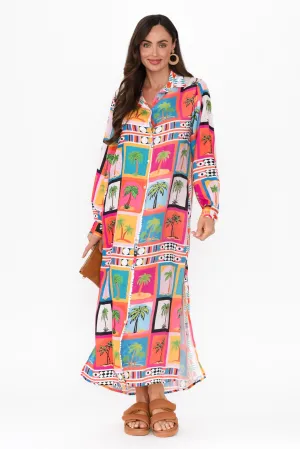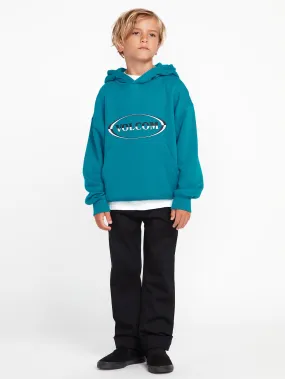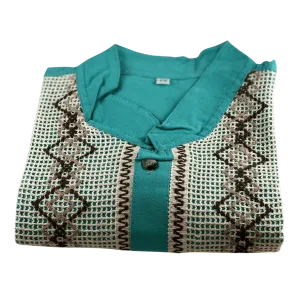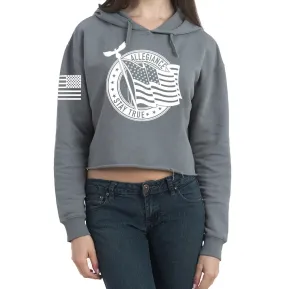Original Item: Only One Available. This is a very nice wartime pattern German WWII Heer Army M-36 Dienstrock (Service Tunic), showing only light wear and in very good display condition. We were not able to find any maker or size information inside of the tunic, so it is definitely a bespoke example, made for a high ranking administrative official. The tunic features four pockets with scalloped flaps and silver pebbled aluminum buttons, and has a six button front closure, with two "hook and loop" fasteners for the collar. The buttons on the tunic are sewn directly to the fabric, not attached with metal circlips, and are all maker marked on the back.
It is adorned with the usual rank and branch insignia used on German tunics. The attractive Army breast eagle is the correct officer's silver bullion BeVo machine embroidered type on a green background, and is very neatly hand stitched to the chest in a fashion typical of wartime German tailor work. There are also some thread loops on the left breast where medals were once displayed.
The collar is wrapped in a dark-green wool, has officer's field litzen collar patches on each side, which are woven from silver bullion thread with a dark green background matching the collar. The colored stripes on each are Medizinblau (Medical Blue), the Waffenfarbe (corps color) for the Heer Sanitätstruppe (Military medical service). The collar is in good shape, tough there is a bit of wear around the edges, which is usually one of the first places to show damage from use. There are also a few moth nips on the litzen.
The “sew-in” style Stabsoffizier schulterklappen (Field-grade Officer shoulder boards) of this tunic are constructed with two rows of fine silver flatware "Russia Braid" double piping, which are plaited together to form a loop around the buttonhole. They have the correct Medical Blue piping around the edges. There are no rank "pips", just the administrative Caduceus, which is two serpents entwined on the staff of Mercury. This would indicate an administrative official at the level of a Oberstabsarzt or Major, however the officials had "titles", not ranks, and these were different for every branch. We have not been able to find information on the title structure of the medical service unfortunately.
Overall condition is very good, with just a bit of light wear and staining consistent with service. We did not really notice any holes or other major damage, and overall it displays very nicely. Ready to out fit with medals and display!
Approximate Measurements:
Collar to shoulder: 9.5”
Shoulder to sleeve: 28”
Shoulder to shoulder: 16”
Chest width: 18.5”
Waist width: 18.5”
Hip width: 19”
Front length: 27"
Armed Forces officials (Wehrmachtbeamte):
Officials in administrative, legal, and technical service positions were usually placed in a category unique to the Wehrmacht. They consist of civil service personnel performing functions within the Armed Forces and are recruited, in part, from former professional non-commissioned officers who became military candidates for civil service (German: Militäranwärter) at the end of their 12-year contractual period of active military service.
Up to 1944, none of these officials were classified as soldiers; in that year certain groups were converted into officers in the Special Troop Service (Truppensonderdienst or TSD). These were the higher administrative officers (Intendanten) in ranks from captain to lieutenant general; the lower administrative officers (Zahlmeister) in the ranks of first and second lieutenant, and the judge advocates (Richter) in ranks from captain to lieutenant general. At this time all personnel of the Field Post Office were made soldiers as well, but formed a corps of their own rather than belonging to the TSD. It was also made possible for qualified reserve technical service officials to become reserve officers of the motor maintenance troops.
The officials had titles, not ranks: Intendant, Direktor, Rat, Vorsteher, Inspektor, Meister, Assistent. This is a complex subject as each branch had its own titles.
German Service Tunics:
Terms such as M40 and M43 were never designated by the Wehrmacht, but are names given to the different versions of the Model 1936 field tunic by modern collectors, to discern between variations, as the M36 was steadily simplified and tweaked due to production time problems and combat experience.
Field Tunic (Feldbluse) Model 1936
When the NSDAP came to power in early 1933 the Reichswehr, the armed forces of the Weimar Republic, were near the end of a two-year project to redesign the Army Feldbluse (field-blouse). Beginning in that year the new tunic was issued to the Reichsheer and then the rapidly growing Wehrmacht Heer, although minor design changes continued to be made until the appearance of the standardized Heeres Dienstanzug Modell 1936. The M36 tunic still retained the traditional Imperial and Reichswehr uniform color of grey-green "field gray" (feldgrau) wool, but incorporated four front patch pockets with scalloped flaps and pleats (on Reichswehr tunics the lower pockets were internal and angled). The front was closed with five buttons rather than the previous eight, and the collar and shoulder straps were of a dark bottle-green instead of the Reichswehr grey. Compared to the Weimar-era uniforms the skirt of the feldbluse was shorter and the tailoring was more form-fitting due to Germany's adoption of mechanized warfare: soldiers now spent much time in the confined space of a vehicle and a shorter jacket was less likely to pick up dirt from the seats. It also included an internal suspension system, whereby a soldier could hang an equipment belt on a series of hooks outside of the tunic. These hooks were connected to two straps inside the lining, which spread the weight of equipment without having to use external equipment suspenders. The M36 was produced and issued until the very end of the war, though successive patterns became predominant.
SS field uniforms were of similar appearance externally but to fit their larger patches had a wider, feldgrau collar, and the lower pockets were of an angled slash type similar to the black or grey SS service-dress. The second button of an SS Feldbluse was positioned somewhat lower, so that it could be worn open-collar with a necktie. Due to supply problems the SS were often issued army uniforms.




